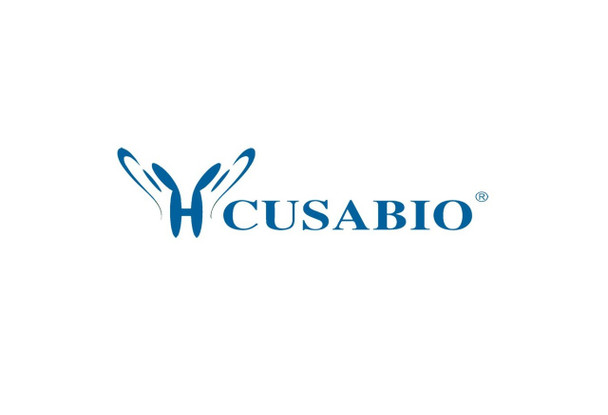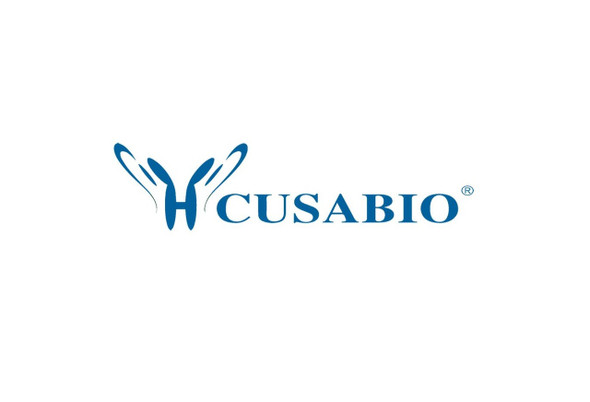Cusabio Human Recombinants
Recombinant Human Chitinase-3-like protein 1 (CHI3L1) | CSB-EP005346HU
- SKU:
- CSB-EP005346HU
- Availability:
- 3 - 7 Working Days
Description
Recombinant Human Chitinase-3-like protein 1 (CHI3L1) | CSB-EP005346HU | Cusabio
Alternative Name(s): 39KDA synovial protein Cartilage glycoprotein 39
Gene Names: CHI3L1
Research Areas: Signal Transduction
Organism: Homo sapiens (Human)
AA Sequence: YKLVCYYTSWSQYREGDGSCFPDALDRFLCTHIIYSFANISNDHIDTWEWNDVTLYGMLNTLKNRNPNLKTLLSVGGWNFGSQRFSKIASNTQSRRTFIKSVPPFLRTHGFDGLDLAWLYPGRRDKQHFTTLIKEMKAEFIKEAQPGKKQLLLSAALSAGKVTIDSSYDIAKISQHLDFISIMTYDFHGAWRGTTGHHSPLFRGQEDASPDRFSNTDYAVGYMLRLGAPASKLVMGIPTFGRSFTLASSETGVGAPISGPGIPGRFTKEAGTLAYYEICDFLRGATVHRILGQQVPYATKGNQWVGYDDQESVKSKVQYLKDRQLAGAMVWALDLDDFQGSFCGQDLRFPLTNAIKDALAAT
Source: E.coli
Tag Info: N-terminal 10xHis-SUMO-tagged and C-terminal Myc-tagged
Expression Region: 22-383aa
Sequence Info: Full Length of Mature Protein
MW: 60.5 kDa
Purity: Greater than 90% as determined by SDS-PAGE.
Relevance: Carbohydrate-binding lectin with a preference for chitin. Has no chitinase activity. May play a role in tissue remodeling and in the capacity of cells to respond to and cope with changes in their environment. Plays a role in T-helper cell type 2 (Th2) inflammatory response and IL-13-induced inflammation, regulating allergen sensitization, inflammatory cell apoptosis, dendritic cell accumulation and M2 macrophage differentiation. Facilitates invasion of pathogenic enteric bacteria into colonic mucosa and lymphoid organs. Mediates activation of AKT1 signaling pathway and subsequent IL8 production in colonic epithelial cells. Regulates antibacterial responses in lung by contributing to macrophage bacterial killing, controlling bacterial dissemination and augmenting host tolerance. Also regulates hyperoxia-induced injury, inflammation and epithelial apoptosis in lung.
Reference: "Human cartilage gp-39, a major secretory product of articular chondrocytes and synovial cells, is a mammalian member of a chitinase protein family."Hakala B.E., White C., Recklies A.D.J. Biol. Chem. 268:25803-25810(1993)
Storage: The shelf life is related to many factors, storage state, buffer ingredients, storage temperature and the stability of the protein itself. Generally, the shelf life of liquid form is 6 months at -20?/-80?. The shelf life of lyophilized form is 12 months at -20?/-80?.
Notes: Repeated freezing and thawing is not recommended. Store working aliquots at 4? for up to one week.
Function: Carbohydrate-binding lectin with a preference for chitin. Has no chitinase activity. May play a role in tissue remodeling and in the capacity of cells to respond to and cope with changes in their environment. Plays a role in T-helper cell type 2 (Th2) inflammatory response and IL-13-induced inflammation, regulating allergen sensitization, inflammatory cell apoptosis, dendritic cell accumulation and M2 macrophage differentiation. Facilitates invasion of pathogenic enteric bacteria into colonic mucosa and lymphoid organs. Mediates activation of AKT1 signaling pathway and subsequent IL8 production in colonic epithelial cells. Regulates antibacterial responses in lung by contributing to macrophage bacterial killing, controlling bacterial dissemination and augmenting host tolerance. Also regulates hyperoxia-induced injury, inflammation and epithelial apoptosis in lung.
Involvement in disease: Asthma-related traits 7 (ASRT7); Schizophrenia (SCZD)
Subcellular Location: Secreted, extracellular space, Cytoplasm, Cytoplasm, perinuclear region, Endoplasmic reticulum
Protein Families: Glycosyl hydrolase 18 family
Tissue Specificity: Present in activated macrophages, articular chondrocytes, synovial cells as well as in liver. Very low or undetectable expression in non-inflammatory colon. Undetectable in muscle tissues, lung, pancreas, mononuclear cells, or fibroblasts.
Paythway:
Form: Liquid or Lyophilized powder
Buffer: If the delivery form is liquid, the default storage buffer is Tris/PBS-based buffer, 5%-50% glycerol. If the delivery form is lyophilized powder, the buffer before lyophilization is Tris/PBS-based buffer, 6% Trehalose, pH 8.0.
Reconstitution: We recommend that this vial be briefly centrifuged prior to opening to bring the contents to the bottom. Please reconstitute protein in deionized sterile water to a concentration of 0.1-1.0 mg/mL.We recommend to add 5-50% of glycerol (final concentration) and aliquot for long-term storage at -20?/-80?. Our default final concentration of glycerol is 50%. Customers could use it as reference.
Uniprot ID: P36222
HGNC Database Link: HGNC
UniGene Database Link: UniGene
KEGG Database Link: KEGG
STRING Database Link: STRING
OMIM Database Link: OMIM










